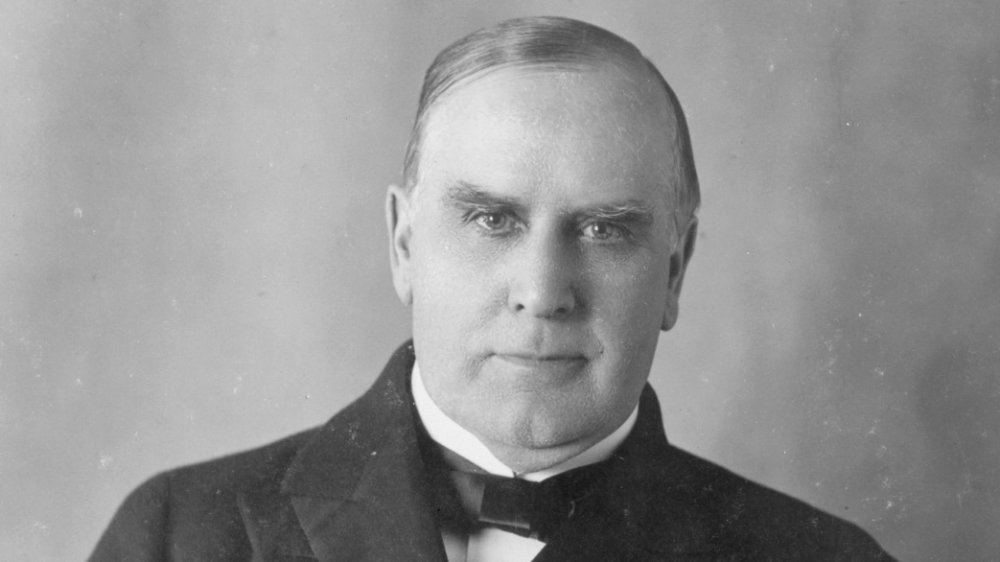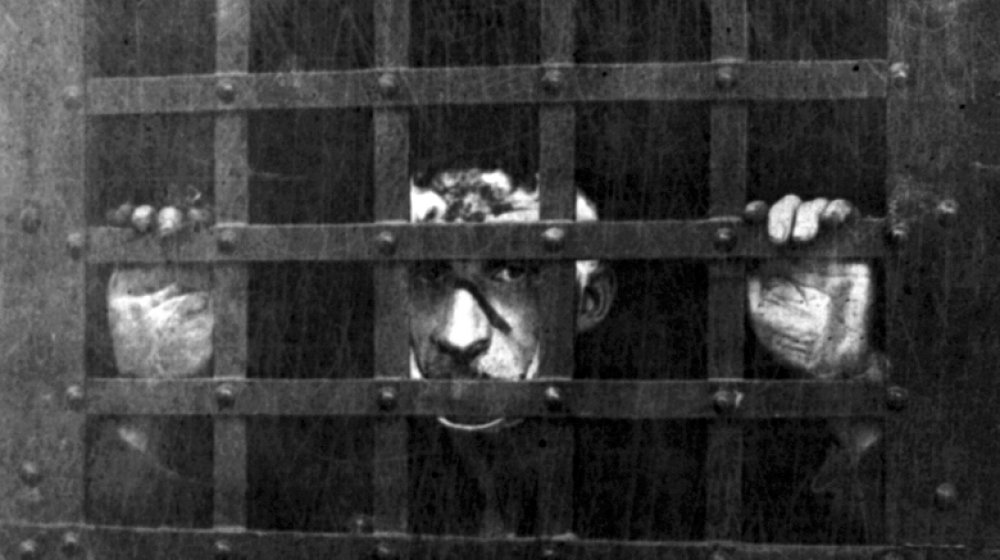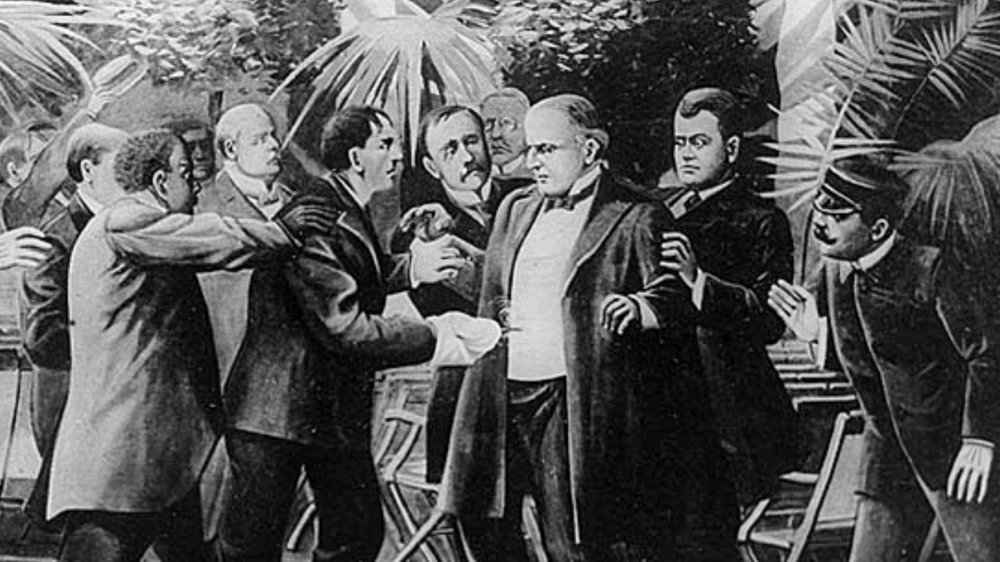The Untold Truth Of William McKinley's Assassination
The highest peak in North America, Alaska's Mount Denali, was once the namesake of President William McKinley, who never set foot in Alaska, according to Live Science. It was first called Mount McKinley in 1896 by a gold prospector named William Dickey because McKinley backed the gold standard. And let's face it — naming a giant, rock-hard mass "Mount Dickey" would have conjured images of the wrong kind of mounting.
While McKinley was as good as gold by Dickey's standards, not everyone held the president in such high regard. Professor Emeritus of American History at the University of Texas Lewis Gould writes, "For a long time, William McKinley was considered a mediocre President, a chief executive who was controlled by his political cronies and who was pressured into war with Spain () by the press." But nobody viewed Mckinley more harshly than anarchist Leon Czolgosz, who, according to the Encyclopedia Britannica, denounced the president as "the enemy of the good people — the working people." Czolgosz's contempt for the commander in chief ran so deep that on September 6, 1901, he assassinated him.
An assassin's insanity
Some modern historians look more kindly on William McKinley than their predecessors. Per the UVA Miller Center, experts have come to see him as an important POTUS who advanced America's global standing through assertive foreign policy. The U.S. won the Spanish-American War in just three months, turning Cuba into a U.S. protectorate and making Puerto Rico, Guam, and the Phillipines into American territories. McKinley helped suppress the Boxer Rebellion in China among other power moves. But Leon Czolgosz saw McKinley through the eyes of a man who had lost his standing in America and had possibly lost his mind.
A former wire mill worker, Czolgosz got booted and blacklisted after going on strike to protest a wage cut in 1893, via the Encyclopedia Britannica. He regained his job under the alias Fred C. Nieman, whose surname rather pointedly resembles the German word for "Nobody" (Niemand). Literally living as a nobody, he grew fixated on wealth inequality and quit his job in 1898. By some accounts, Czolgosz suffered a nervous breakdown. He became involved with the anarchist movement and grew dangerously unhinged. He eventually concluded that he had a "duty" to to murder the president.
The handshake heard round the world
Czolgosz made his move at the Pan-American Exposition in Buffalo, New York. As the Alpena News details, before a crowd of 50,000 people, President McKinley gave a speech decrying isolationism and advocating expanded trade. Czolgosz considered pouncing mid-speech but decided to bide his time. During the second day of the expo, he waited for McKinley to try to shake his hand during a meet-and-greet. That hand was wrapped in a handkerchief that concealed his soon-to-be murder weapon. The assassin unloaded two bullets into McKinley.
According to the National Institutes of Health, a surgeon successfully extracted one of the bullets, which grazed the president's breastbone. But a bullet to the gut proved harder to locate. Inventor Thomas Edison sent an X-ray machine to aid in the search, but physicians opted not to use it because McKinley seemed to be recovering. Sadly, he developed gangrene and died of a bacterial infection eight days after being shot. Per the Encyclopedia Britannica, Leon Czolgosz was executed by electrocution in October 1901. His body was dissolved with sulfuric acid and buried in an unmarked grave.


